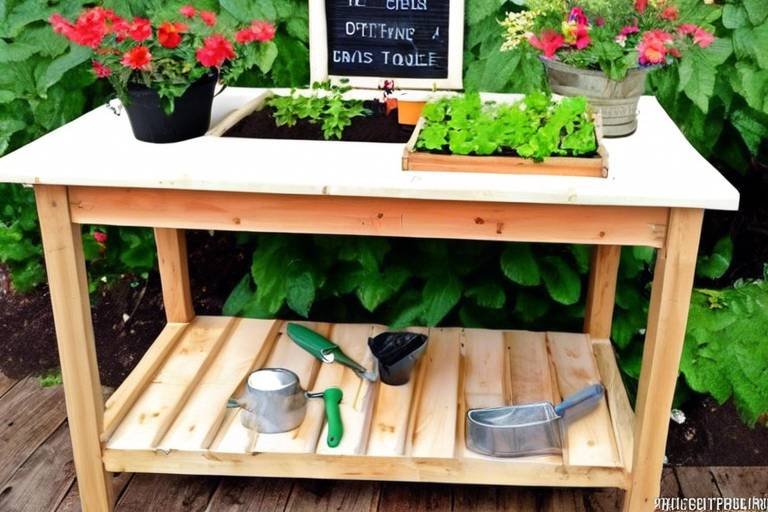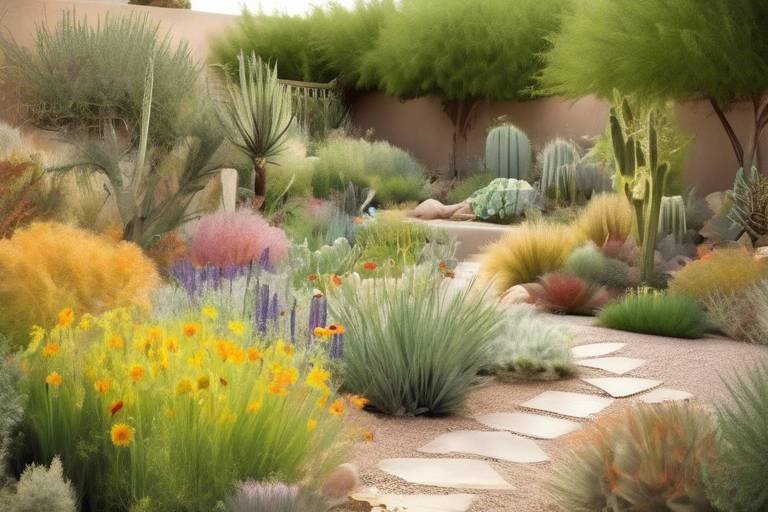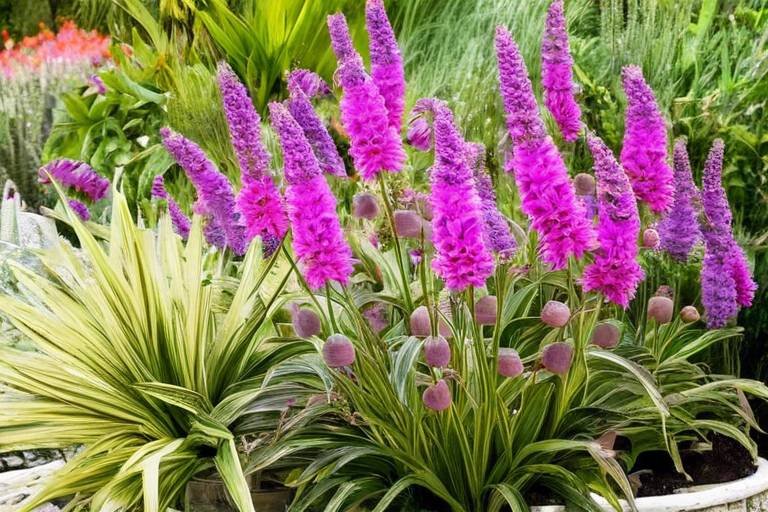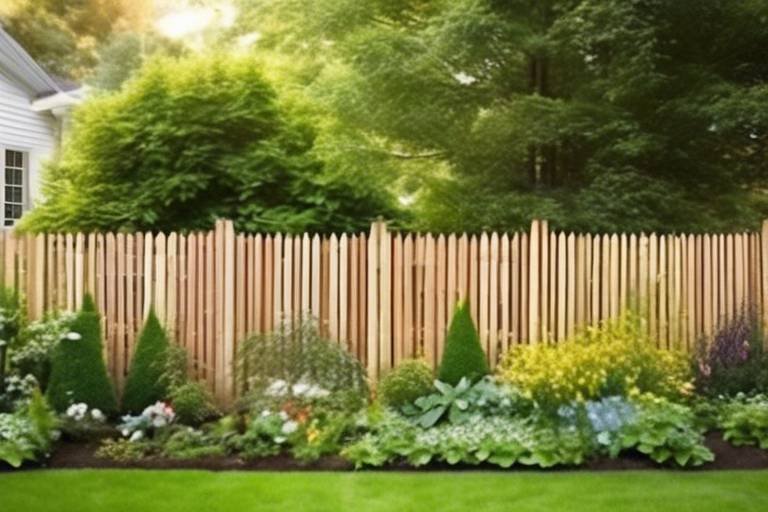Creating a Wildlife Watering Station in Your Garden
Creating a Wildlife Watering Station in your garden can transform your outdoor space into a bustling oasis for local birds, insects, and other creatures. By providing a reliable source of hydration, you not only attract wildlife but also support their well-being. Imagine the delightful sight of colorful birds fluttering around, or butterflies delicately sipping water on a sunny day.
When choosing the right location for your watering station, think like a wildlife enthusiast. Opt for a spot that offers a sense of seclusion, away from noisy areas, ensuring your visitors feel safe and undisturbed. Consider placing it near trees or bushes to provide shade and protection, creating a serene environment for your guests.
For the water feature selection, explore various options that cater to different species. From traditional birdbaths to shallow dishes or even a gentle dripping water source, choose a design that suits the needs of the wildlife you wish to attract. Remember, size matters – ensure the water feature is accessible to animals of all sizes.
Adding perches and rocks near the watering station not only serves as resting spots for birds and insects but also adds a touch of natural beauty to the setup. Picture a robin perched on a rock, taking a refreshing sip of water before continuing its melodious song.
Surrounding the watering station with native vegetation is like rolling out a green carpet for your guests. Native plants not only provide additional food sources but also offer shelter and nesting opportunities. Imagine bees buzzing around vibrant flowers or a hummingbird darting between blossoms – a true wildlife spectacle.
To ensure the longevity of your watering station, regular maintenance is key. Clean and refill the water feature frequently to prevent the spread of diseases among wildlife. Keep an eye out for any debris or algae buildup, maintaining a pristine drinking environment for your visitors.
Monitoring visitor activity at the watering station adds a layer of excitement to your gardening experience. Keep a watchful eye on the types of wildlife that frequent the area and make adjustments based on their preferences. Every sighting is a window into the natural world thriving in your garden.
Creating a welcoming environment around the watering station involves adding decorative elements that reflect your personal style. Whether it's a collection of smooth rocks, seashells, or colorful stones, infuse your unique touch while providing a sanctuary for wildlife to enjoy.
Share your experience of creating a wildlife watering station with your community. Inspire others to embark on a similar journey and contribute to the conservation of local wildlife populations. By spreading the message of coexistence and harmony with nature, you become a steward of the environment.

Choosing the Right Location
When it comes to creating a wildlife watering station in your garden, choosing the right location is crucial for its success. The location you select can significantly impact the accessibility and attractiveness of the station to local wildlife. To ensure that your watering station serves its purpose effectively, consider a few key factors when deciding where to place it.
First and foremost, opt for a spot that offers easy access for wildlife while being away from high human traffic areas. This will allow birds, insects, and other creatures to hydrate without feeling disturbed or threatened. Providing a sense of seclusion can make the visitors feel safe and encourage frequent visits to the station.
Additionally, it is essential to choose a location that provides some shade and protection. Wildlife, especially birds, may feel more comfortable approaching the watering station if it offers cover from predators or harsh weather conditions. Consider placing the station near trees or shrubs that can offer shelter while also enhancing the natural feel of the environment.
By strategically selecting the right location for your wildlife watering station, you can create a welcoming and safe space for local wildlife to quench their thirst and thrive in your garden.

Water Feature Selection
When it comes to selecting a water feature for your wildlife watering station, there are several options to consider. The choice of water feature plays a crucial role in attracting and supporting different species of wildlife in your garden. From birdbaths to shallow dishes to dripping water sources, each option offers unique benefits for the creatures that visit your outdoor oasis.
Before deciding on a specific water feature, it's essential to think about the needs of the wildlife you wish to attract. For example, smaller birds may prefer shallow dishes or bird-specific baths, while larger animals like squirrels and rabbits might benefit from a larger, deeper source of water. By understanding the requirements of various species, you can tailor your water feature selection to cater to a diverse range of wildlife.
Additionally, the size and design of the water feature play a significant role in its effectiveness. A small birdbath may be suitable for attracting birds and butterflies, while a larger pond or dripping water source could entice frogs, toads, and other amphibians. Consider the space available in your garden and the overall aesthetic you wish to achieve when choosing the right water feature for your wildlife watering station.
Furthermore, incorporating elements like rocks and pebbles into the water feature can provide landing spots for birds and insects, making it easier for them to access the water. These natural perches not only serve a functional purpose but also enhance the visual appeal of the watering station, creating a more inviting environment for wildlife.

Adding Perches and Rocks
When creating a wildlife watering station in your garden, incorporating perches and rocks is essential to provide resting spots for birds and insects as they hydrate. These features not only serve a functional purpose but also add a natural and aesthetic appeal to the setup.
Placing perches near the watering station allows birds to perch comfortably while keeping an eye out for potential threats. It gives them a sense of security, making them more likely to revisit the station regularly. Additionally, perches provide insects with a place to land and rest, encouraging their presence in your garden.
Integrating rocks around the water feature serves multiple purposes. Rocks can act as stepping stones for smaller animals, ensuring they can access the water safely. They also help regulate the water temperature by providing shade, preventing it from overheating in the sun. Moreover, rocks create a natural and harmonious environment that blends well with the surrounding vegetation.
Consider the placement of perches and rocks strategically to maximize their effectiveness. Position them close to the water source but ensure there is enough space for wildlife to move around comfortably. By thoughtfully incorporating these elements, you not only enhance the functionality of the watering station but also create a welcoming habitat for a diverse range of wildlife.

Planting Native Vegetation
When it comes to creating a wildlife watering station in your garden, planting native vegetation plays a crucial role in attracting and supporting local wildlife. Surrounding the watering station with native plants not only enhances the beauty of your outdoor space but also provides additional food sources and shelter for various creatures. By choosing plants that are indigenous to your region, you can create a thriving ecosystem that benefits pollinators, birds, and other wildlife.
Native vegetation not only adds to the visual appeal of the watering station but also serves as a natural habitat for local wildlife. These plants have evolved to thrive in the specific conditions of your area, making them well-suited to attract and support a diverse range of species. By planting a variety of native flowers, shrubs, and trees around the watering station, you can create a welcoming environment that encourages wildlife to visit and stay.
Consider incorporating a mix of nectar-producing flowers, fruit-bearing shrubs, and native grasses to attract different types of wildlife to your garden. Plants like milkweed, coneflowers, and native grasses provide essential resources for pollinators, while berry-producing shrubs offer food for birds and small mammals. By diversifying the vegetation around the watering station, you can create a balanced ecosystem that supports a variety of wildlife species.

Maintaining the Watering Station
When it comes to in your garden, consistency is key to ensuring a safe and inviting environment for local wildlife. Regular upkeep not only benefits the creatures that visit but also enhances the overall appeal of your outdoor space.
One important aspect of maintenance is to clean and refill the water feature on a regular basis. Stagnant water can attract mosquitoes and other pests, posing a health risk to both wildlife and humans. By keeping the water clean and fresh, you create a welcoming oasis for birds, insects, and other animals.
Additionally, it's crucial to monitor for debris or algae buildup in the water feature. These can not only contaminate the water but also deter wildlife from using the station. Regularly inspect the area for any signs of contamination and take necessary steps to clean and maintain the water source.
Creating a schedule for maintenance can help you stay on top of tasks and ensure that the watering station remains in optimal condition. Whether it's weekly cleanings or monthly inspections, having a routine in place can make the process more manageable and effective.
Consider incorporating plants that naturally filter the water and help prevent algae growth. Aquatic plants like water lilies not only add beauty to the station but also serve a functional purpose in maintaining water quality. These natural filters can reduce the need for chemical treatments, promoting a more eco-friendly approach to maintenance.
Lastly, observe the wildlife that visit the watering station and make adjustments based on their behavior. If certain animals seem hesitant to approach, consider moving the station to a more secluded or sheltered area. By catering to the needs and preferences of your visitors, you can create a harmonious environment that supports a diverse range of wildlife.

Monitoring Visitor Activity
When it comes to at your wildlife watering station, keen observation is key. Take the time to watch and learn about the different species that come to quench their thirst in your garden oasis. Are there colorful butterflies fluttering around, or perhaps chirping birds taking a sip? By keeping a watchful eye, you can gain valuable insights into the preferences and behaviors of the wildlife in your area.
Consider keeping a journal to record the various visitors that stop by. Note down the time of day when activity is at its peak, the types of animals that frequent the watering station, and any interesting behaviors you observe. This documentation can help you track patterns and make informed decisions about how to enhance the habitat for your wild guests.
Creating a habitats chart can also be a fun and educational way to monitor visitor activity. List the different species of wildlife you encounter, along with their preferred habitats and behaviors. This visual aid can serve as a handy reference guide and add a touch of creativity to your monitoring efforts.
Another effective way to monitor visitor activity is to set up a trail camera near the watering station. This discreet device can capture candid moments of wildlife interactions without disturbing their natural behavior. Reviewing the footage can provide valuable insights into the diversity of species that visit your garden and their unique behaviors.

Creating a Welcoming Environment
Creating a welcoming environment around your wildlife watering station is essential to attract and provide a comfortable space for local wildlife. You can enhance the ambiance by incorporating decorative elements such as rocks, shells, or colorful stones strategically placed around the area. These additions not only add visual appeal but also create a more natural and inviting setting for birds, insects, and other creatures.
Personalizing the space with items that reflect your style and personality can make the watering station feel like a natural extension of your garden. Consider adding unique touches like handcrafted bird feeders, artistic plant pots, or whimsical garden ornaments to infuse character into the environment. By incorporating elements that resonate with you, you create a space that is both functional for wildlife and visually pleasing for yourself.
Furthermore, you can utilize plants and flowers around the watering station to attract more wildlife and create a harmonious ecosystem. Choose native vegetation that not only complements the surrounding environment but also provides additional food sources and shelter for visiting animals. By planting a variety of species that bloom at different times of the year, you can ensure a continuous supply of nectar for pollinators and seeds for birds.
To add a touch of tranquility and serenity to the area, consider incorporating a small seating area where you can relax and observe the wildlife that visits the watering station. A simple bench or a couple of chairs strategically placed near the station allows you to enjoy the beauty of nature up close while providing a quiet retreat in your garden.

Sharing Your Experience
Sharing your experience of creating a wildlife watering station can be a rewarding journey that not only benefits local wildlife but also enriches your connection with nature. By inviting others to witness the beauty and wonder of wildlife in your garden, you can inspire a ripple effect of conservation efforts in your community.
One way to share your experience is through social media platforms, where you can post photos and updates about your watering station. Capturing moments of birds quenching their thirst or butterflies fluttering around the plants can evoke a sense of awe and appreciation among your friends and followers.
Additionally, consider hosting a small gathering or workshop in your garden to showcase the importance of creating wildlife-friendly habitats. Share your knowledge about native plants, water conservation, and the significance of supporting local biodiversity through simple yet impactful actions.
Engaging with local schools or community groups can also amplify the impact of your efforts. By offering educational sessions or guided tours of your garden, you can instill a sense of stewardship and environmental responsibility in the next generation.
Remember, the act of sharing your experience is not just about showcasing your achievements but also about fostering a sense of community and collective responsibility towards protecting wildlife. Every story shared, every photo posted, and every conversation sparked can contribute to a greater awareness of the interconnectedness between humans and nature.
Frequently Asked Questions
- What types of wildlife can be attracted to a watering station?
Wildlife such as birds, insects, butterflies, and small mammals can be attracted to a watering station in your garden. Providing a water source can help support local biodiversity and create a thriving ecosystem.
- How often should the water feature be cleaned and refilled?
It is recommended to clean and refill the water feature of the watering station regularly, ideally at least once a week. This helps prevent the spread of diseases among wildlife and ensures a clean and safe drinking environment for the visitors.
- What are some decorative elements that can be added to the watering station?
You can enhance the ambiance around the watering station by adding decorative elements such as rocks, shells, colorful stones, or even small sculptures. These elements not only beautify the space but also provide additional resting spots for wildlife.



















